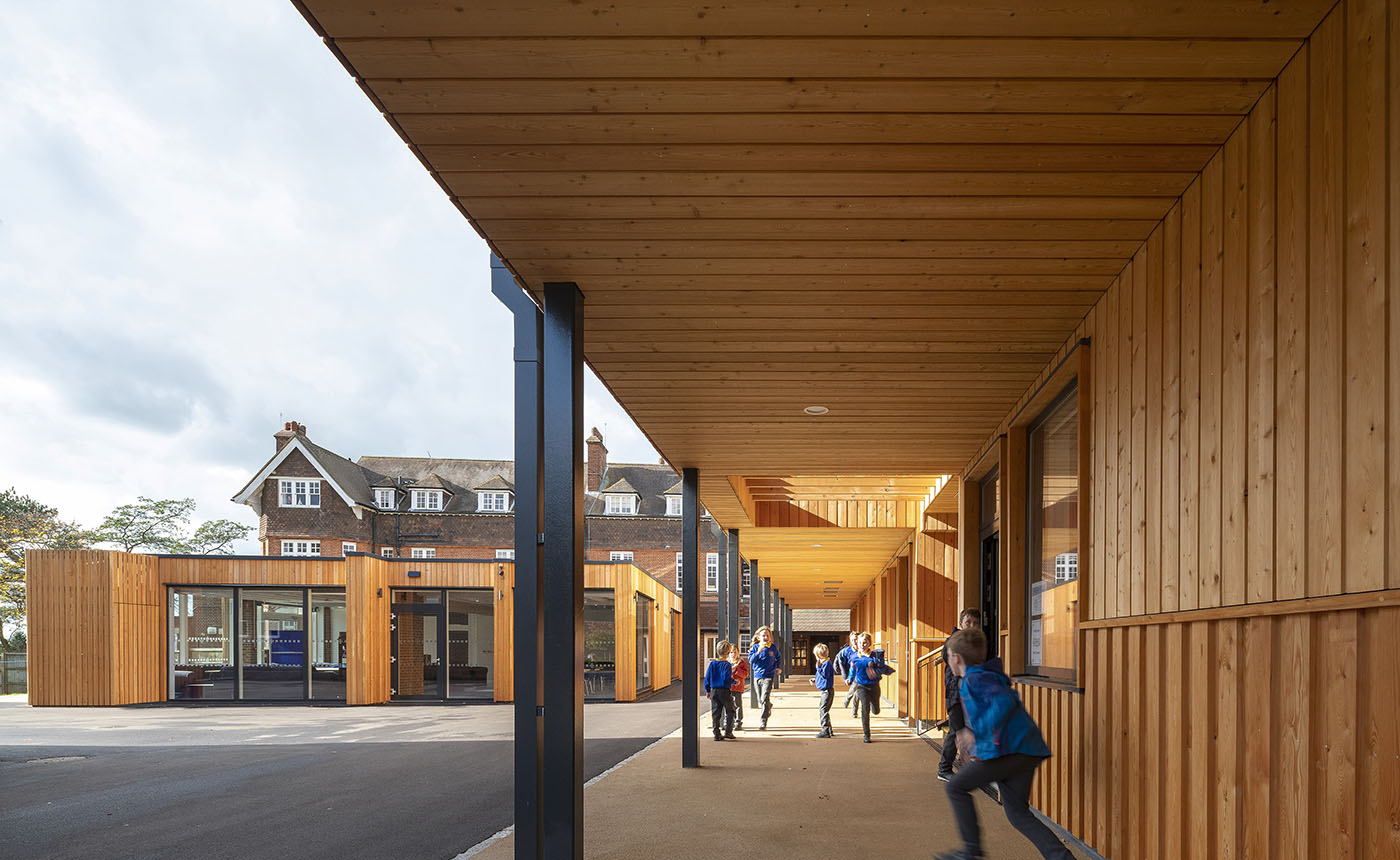
Sustainable learning is a new, emerging approach that encourages pupils to make positive contributions to the environment and instil the skills needed to thrive in a changing, challenging world. It’s about leading the next generation by example, and we can do this by prioritising sustainability at every level, including sustainable classroom build projects.
Connecting the teacher, the pupil and the classroom with the environment in a harmonious way is essential for good, eco-friendly learning facilities. Most importantly, as with any school, the building should inspire the children and emphasise the importance of sustainable development while still allowing for the education they deserve.
 A fantastic example of a sustainable classroom project is the new Townsend Building at Cranleigh Prep School in Surrey. Surrounded by fields and rolling hills, Cranleigh is divided into a Preparatory school for 5 to 11-year olds, and a boarding co-ed school for 13 to 18-year olds. As an educational body, they pride themselves on a blend of traditional and innovative teaching methods and their plucky, can-do approach.
A fantastic example of a sustainable classroom project is the new Townsend Building at Cranleigh Prep School in Surrey. Surrounded by fields and rolling hills, Cranleigh is divided into a Preparatory school for 5 to 11-year olds, and a boarding co-ed school for 13 to 18-year olds. As an educational body, they pride themselves on a blend of traditional and innovative teaching methods and their plucky, can-do approach.
Like all schools, Cranleigh realised that they had to adapt their campus to continue providing for the needs of their students and put a long-term development Masterplan in place to expand and improve the school over the next few years. However, they also prioritised sustainability, and their dedication to the environment resulted in a truly innovative learning facility that makes the right kind of impact.

A school in need of a modern, sustainable classroom space
In the first phase, they wanted to turn their attention to the addition of a new teaching building, which would house classrooms for art, science and D&T (Design & Technology). The original Art facilities were located in a rather uninspiring, standard 1970’s single-storey hut that felt somewhat disconnected from the rest of the campus, and the science labs were dispersed across the school.
The teachers felt that their classes were restricted to activities and teaching methods that the old-fashioned classrooms allowed. It was clear that Cranleigh needed a flexible, multifunctional building that would let them teach in the way they wanted to teach and would also cater for events and outdoor activities. Most importantly, they wanted to inspire pupils by creating a building that represented a sustainable future for their generation.
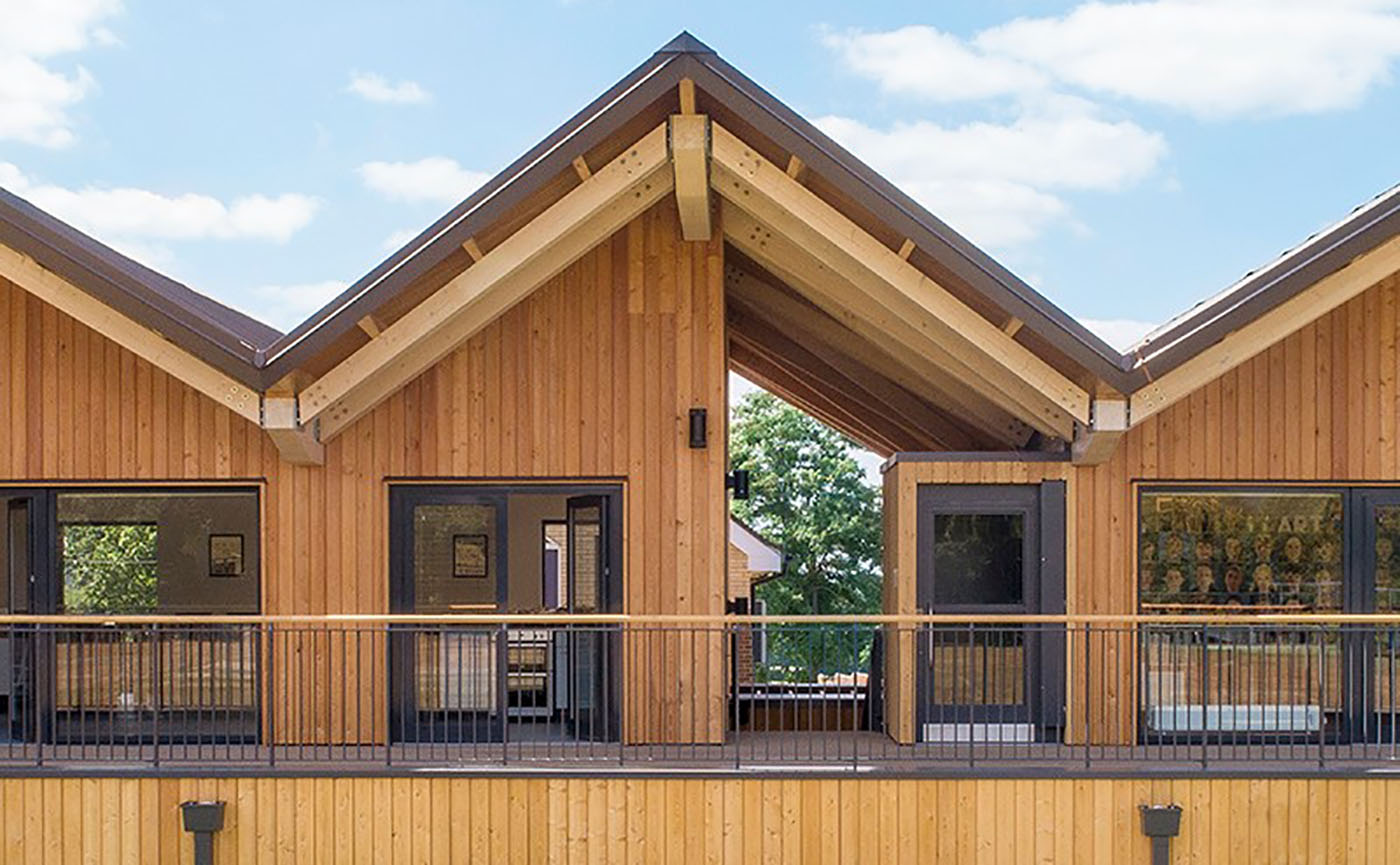

This was a fantastic opportunity to re-think how staff and pupils moved around the school and design a campus with improved circulation, as pupils would disappear into internal corridors to move about between classes, staying removed from the fresh air and outside world.
Headmaster Michael Wilson despised these internal corridors and wanted to avoid using them in the new design. He was strongly driven to have a building that embraced the school’s natural surroundings. Raised in Africa, Wilson was brought up with a love of the great outdoors and wanted the gardens and playing fields to be easily accessible.
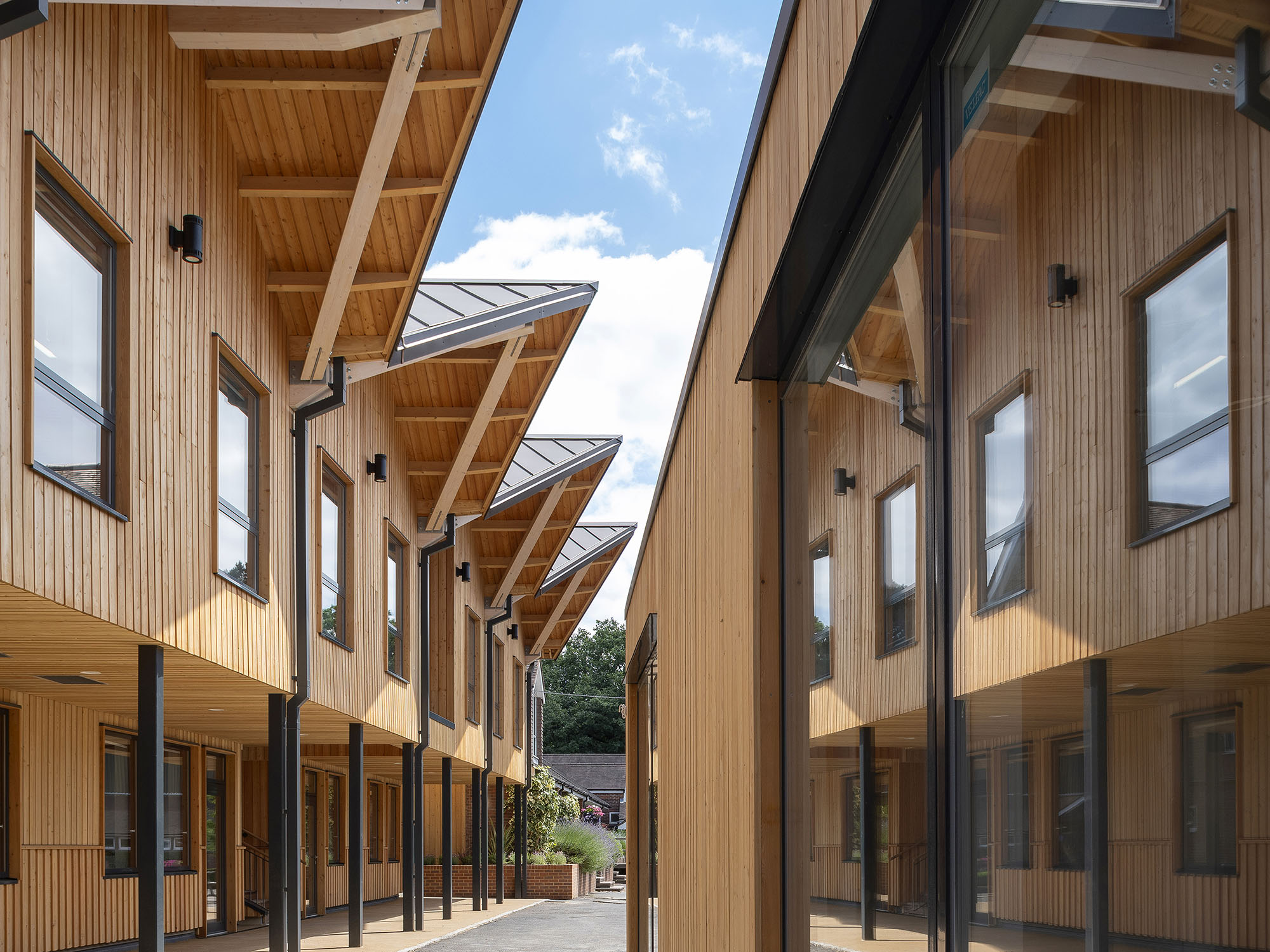
A new design that transforms the campus
Blue Forest was employed by Cranleigh School to put together a design team, which included our friends at Tate Harmer Architects to produce the technical drawings and details. Together, we created the Townsend building which engages as much as possible with the natural environment while providing healthy teaching spaces.
We took inspiration from traditional African timber ‘Safari Lodges’ with pitched roofs, terraces and exposed structural elements. The new classrooms cater for modern day teaching, incorporating flexible spaces that can be used for years to come as teaching styles and methods adapt.
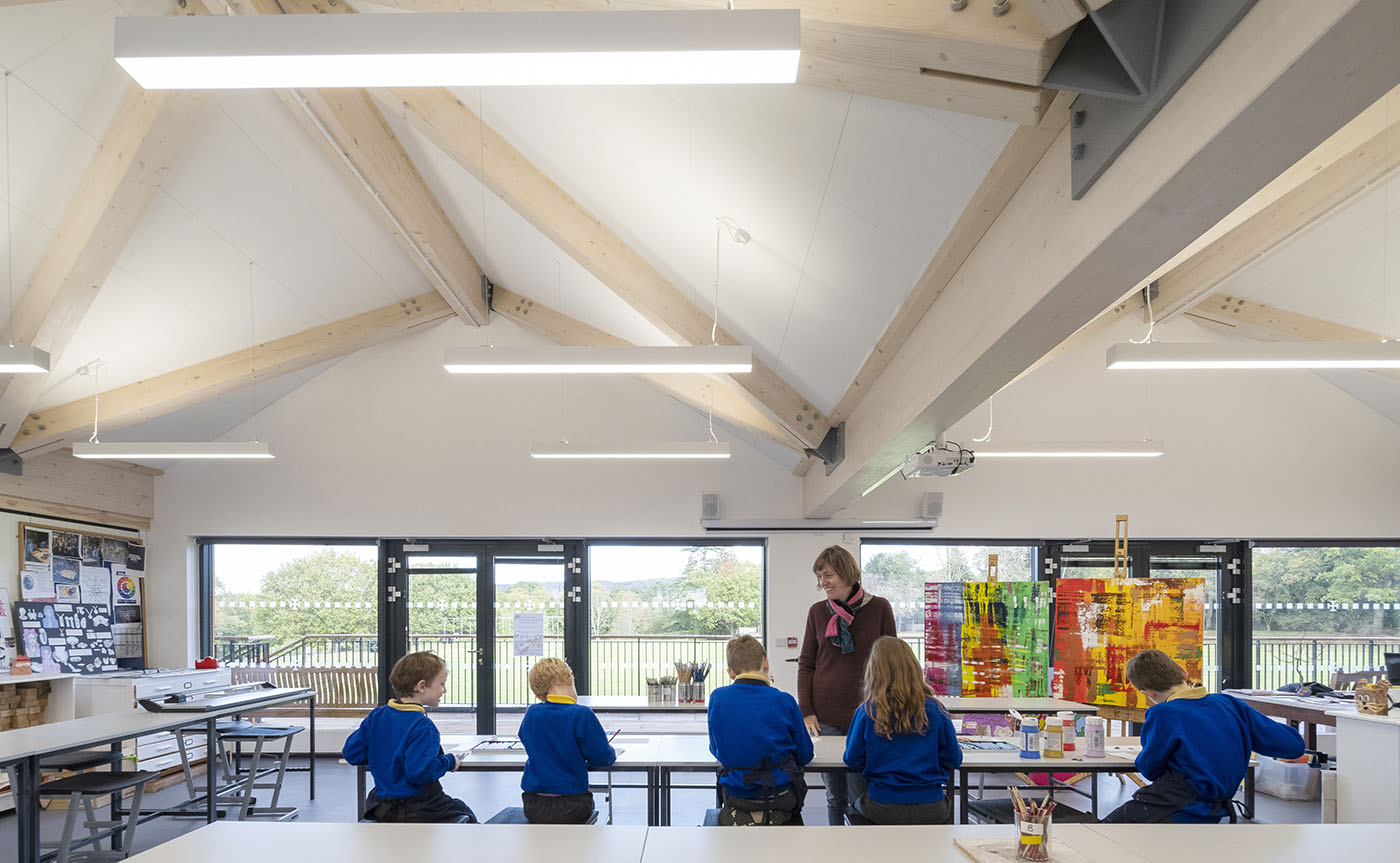

The building includes three bright and spacious science labs with reconfigurable desk ‘islands’, and a D&T room on the ground floor. Three art classrooms are on the first floor, which is separated by partitions which can be removed to create large open-plan spaces for events or group activities.
A home economics room sits above the D&T room, which can also be used to cook and serve food for large school sports events via the sliding doors on the terrace. 
‘The three new science laboratories will create a fantastic space for us to introduce innovative Science teaching from Years 3-8.’ – Cranleigh Prep School, 2018
Located in the middle of the school, the new sustainable classroom provides covered links to previously disconnected parts of the campus, helping the Townsend Building to become the new heart of the school. There are no internal corridors, which not only maximises the amount of teaching space in the classrooms but also encourages students and staff to spend more time outside.
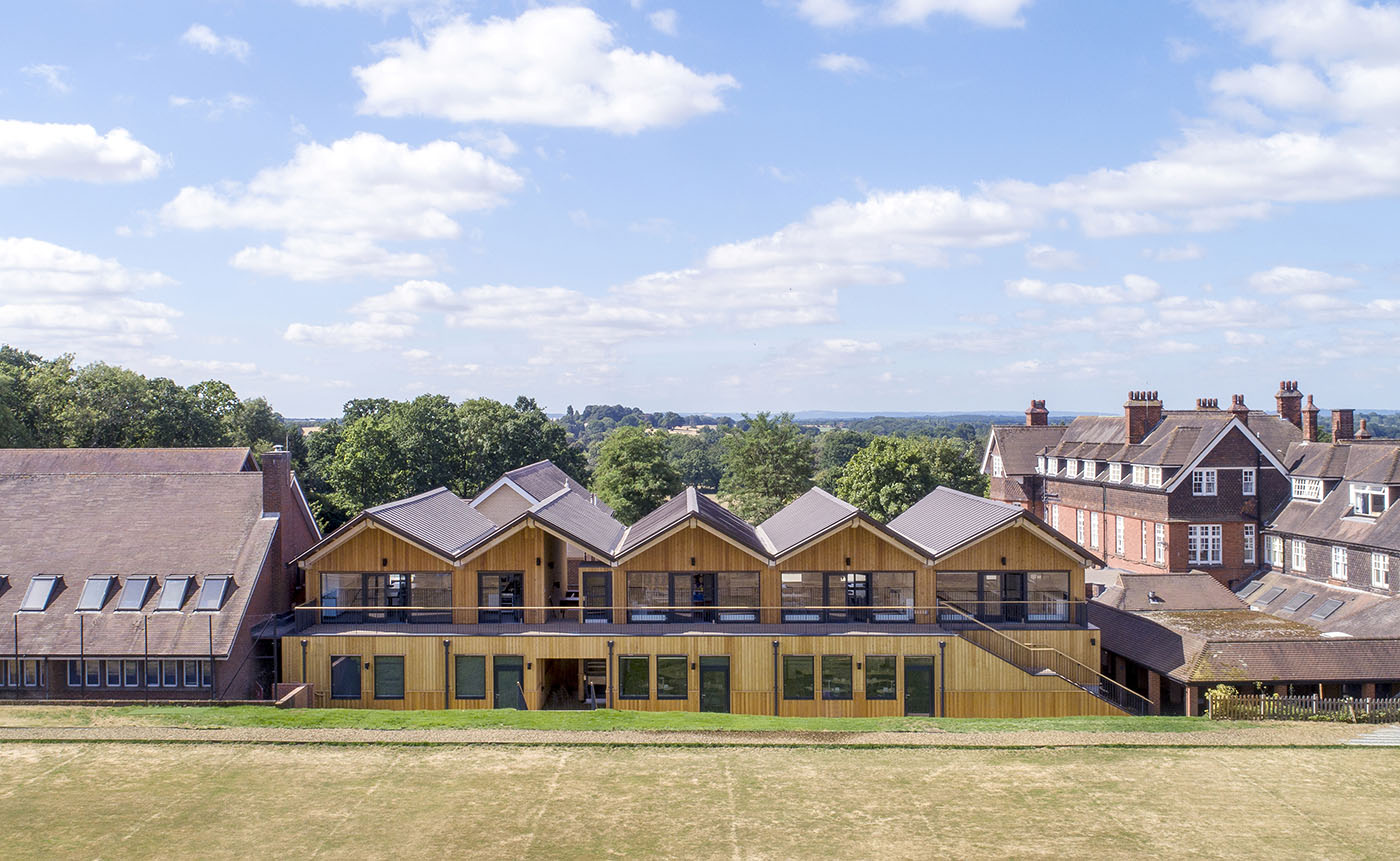
Circulation is entirely external, allowing for a strong connection with the natural environment. The design includes a route to the north that connects to planted flower beds and a new sheltered colonnade to the south and ‘cloister’ spaces created by a floating timber canopy that faces onto the wider landscape around the site. 
On the first floor, a deep timber terrace overlooks the cricket pitch with doors that lead straight out from the classrooms. During the design process, an extra flight of stairs was added to the terrace leading down to the WC facilities in the existing building, as easy bathroom access is important with so many pupils.

Inspired, sustainable learning environments
Sustainability is ingrained in the design, construction and operation of the Townsend Building. The vital importance of sustainability to Blue Forest, Tate Harmer and Cranleigh Preparatory School stem from a shared ethos that a harmonious connection with the natural environment produces excellent quality learning spaces. 
The Townsend Building is framed with Gulam and completely clad in Siberian larch, which has a lovely warm orange colour that will eventually fade into a silver colour over time. Upstairs, the floor is made of concrete to comply with BB98 acoustics standards for learning environments.
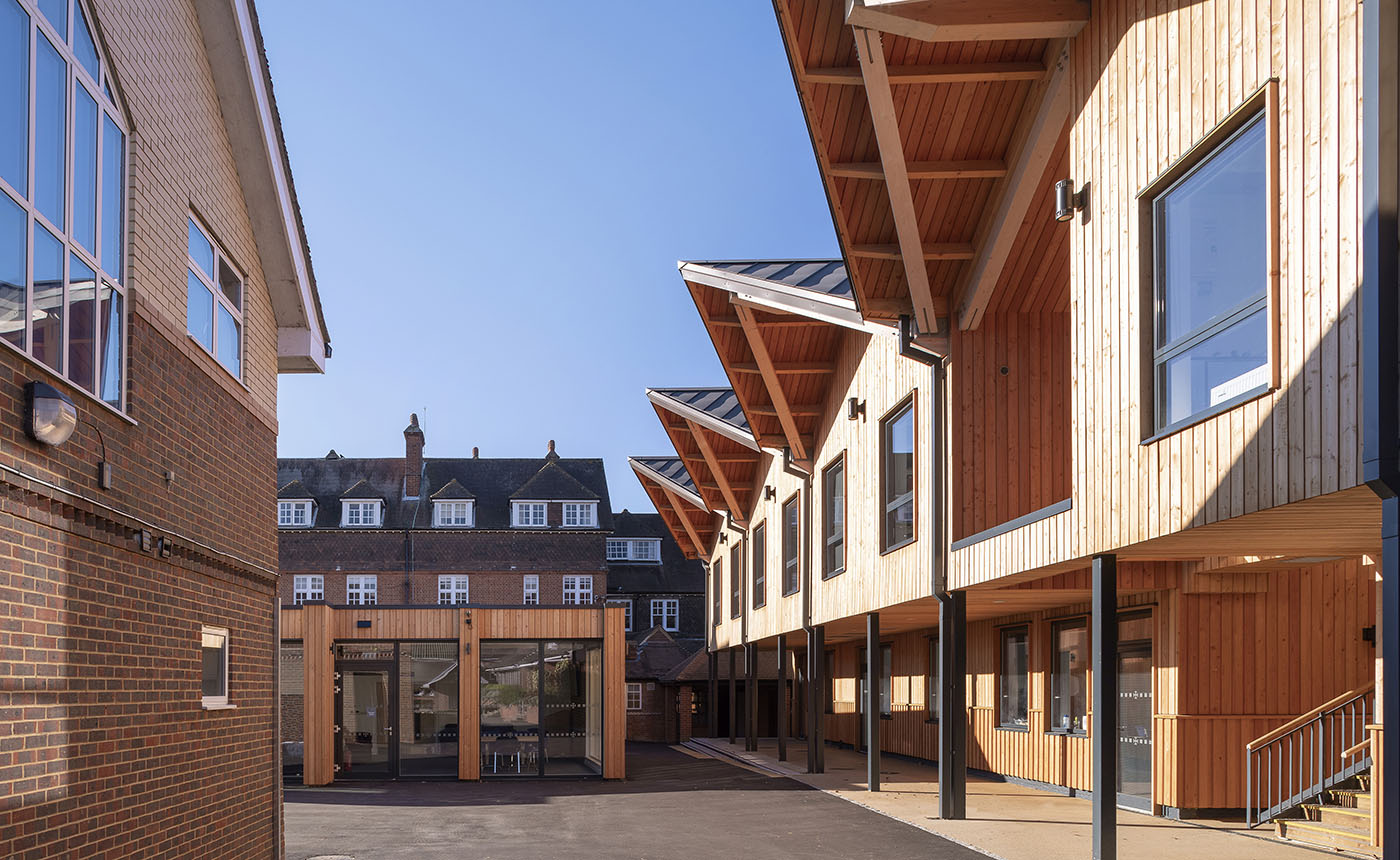

The roof cantilevers over the terrace to provide five triangular overhangs, with trusses pointing out towards the cricket pitch. With soffits of larch, they provide protection for the terrace so crowds can gather to watch cricket matches.
The ridges on either side of the roof have been manipulated to respond to passive heating requirements with a projecting south ridge providing solar shading and a raised north ridge. 
Apart from the home economics room, mechanical ventilation is not required due to the corridor-free design – it’s just not suitable to create an air-tight building with staff and pupils coming in and out all the time.
The sustainable classroom has been energy modelled to ensure ventilation levels were acceptable with lots of natural cross-ventilation. Heating is via standard radiators linked to the school’s system. All these interventions combine to minimise climate- controlled corridors and thereby reducing the building’s energy requirements.

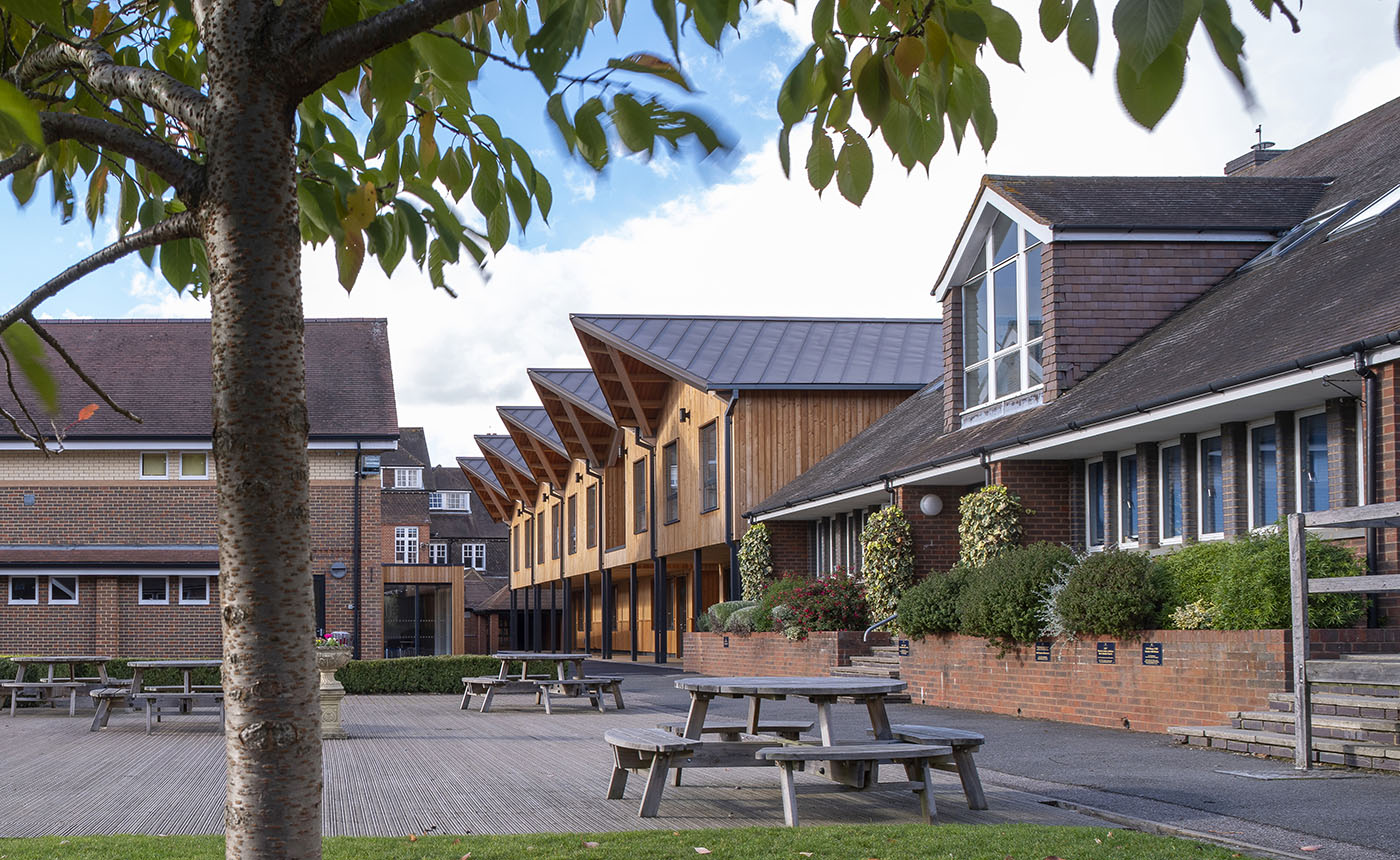
Building work was completed within budget and on time in July 2018. The building was named after Anthony Townsend, former long-serving Chairman of the Governors – who officially opened the project before crowds of pupils, parents, staff and past pupils at the start of the new academic year. | www.cranleigh.org